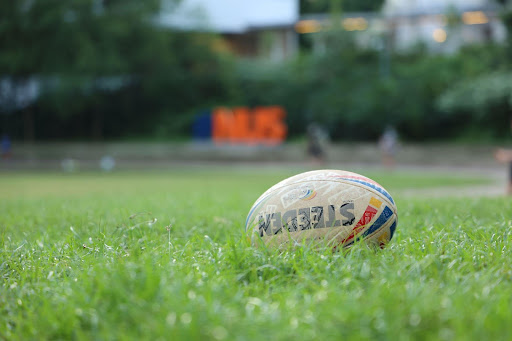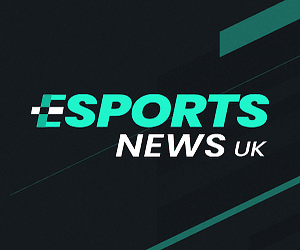This article digs deep into how Ireland has shaped the landscape of Rugby’s Super League — through players, governance, finances, pathways, and cultural exchange. The influence is multi-faceted: rooted in Irish domestic structures, manifesting in Super League rosters, and tied into cross-code dynamics. Below are numerous threads of connection, each explored in detail.
Domestic Governance Roots: Rugby League Ireland
A strong domestic foundation has been crucial. Rugby League Ireland (RLI) is the internationally recognized governing body for rugby league in Ireland, having secured recognition by the RLIF in 2000.
RLI evolved out of an earlier entity known as Ireland Rugby League; it was re-branded and formalized in 2001. It operates across all four Irish provinces—Leinster, Munster, Connacht, and Ulster—and fields both men’s and women’s domestic competitions. RLI runs the “RLI Premiership” (men’s first tier) and “RLI Women’s Premiership.”
Jim Reynolds (Chair of RLI) has emphasized the need to grow home-grown talent rather than rely on union players moonlighting in league. The Irish Sports Council’s “Delivering Equality of Opportunity in Schools” program, with a €32 million budget, is leveraged by RLI in school outreach—one project being in Crumlin, Dublin’s south side. By contrast, the NRL in Australia raises A$400,000 annually in donations, whereas RLI’s total budget for 2021–22 was just €300,000.
The National Side & Wolfhounds Role
Beyond the domestic competitions, the Ireland men’s national rugby league team (nicknamed the Wolfhounds) plays a pivotal role in linking Irish talent to Super League.
The Wolfhounds roster is composed of players of Irish descent who compete in the Super League or the NRL. Notably, Liam Finn holds the record for most caps (32) and is also the top point-scorer (170 points) for Ireland. Stuart Littler is the top try-scorer (13) in Ireland’s RL history.
Ireland first competed in international rugby league in 1995 (defeating the United States 24–22). They participated in the 1996 Super League World Nines and have competed in five Rugby League World Cups: 2000, 2008, 2013, 2017, and 2021. Their best World Cup finish was reaching the quarterfinals in both 2000 and 2008. Ireland’s biggest win came with an 82–0 victory over Serbia in Tullamore in 2009. Conversely, they have suffered heavy defeats, e.g., 62–4 to England Knights (St Helens, 2012) and 64–6 loss to Russia (Moscow, 2004).
Irish Players in Super League
The most visible influence of Ireland in the Super League is via Irish or Irish-heritage players’ performances, contracts, and movements. Pat Richards, of Irish descent, signed with Wigan in 2006 on a two-year contract. His Irish EU passport meant he did not count against Wigan’s overseas quota. In his first season with Wigan, playing out of his usual position, he scored 12 tries and kicked 12 goals in 25 appearances.
Innes Senior has been a consistent foil in Super League. Over his career in the competition, he totaled 133 appearances, 61 tries, for 244 points. In the 2024 season on loan at Castleford, he made 29 appearances and scored 17 tries (68 points). In 2025 he added 13 appearances and 7 tries (28 points).
Louis Senior’s Super League career to date includes 69 appearances, 41 tries, for 164 points. In 2023, with Hull Kingston Rovers, he played 17 matches and scored 8 tries (32 points). Later, on loan to Castleford and then permanent, his contributions continued with 4 appearances and 5 tries (20 points) in 2024, and 4 appearances and 2 tries (8 points) so far in 2025.
Dan Norman moved into Super League when he joined St Helens on a one-year deal, later extended. He then signed a two-year deal with Leigh Leopards for 2024. In 2024, he made 12 appearances for Leigh, helping them finish fifth on the table. In November 2024, Norman announced his retirement and was released early from his contract.
Pathway & Talent Development
Ireland’s influence is not just by exporting players, but also by creating pathways that feed into Super League and cross-code movement.
An academy in Limerick was established to identify talent for Super League clubs. Four Irish players were signed through that pathway to clubs like St Helens, Castleford Tigers, and Leeds Rhinos. Local teams like Dublin Blues, North Side Saints, Tallaght Tigers, Seapoint Sharks, East Coast Panthers, Churchtown Warriors, and Cork Bulls formed the base of domestic structures to funnel talent upward.
Historically, union players in Ireland sometimes switched to league in the off-season to maintain fitness; a foundational example is when the Dublin Blues were established in the 1990s by union players for summer matches. The first Irish Rugby League season began in 1996 but failed in 2000 due to withdrawal of English RFL funding, before being reactivated under RLI in 2001.
Financial & Contractual Dimensions
Money, contracts, and regulation play a crucial role in how Ireland’s influence is manifest. RLI’s budget of €300,000 (2021–22) pales beside leagues like the NRL raising A$400,000 in donations. This financial disparity affects how Irish governance can support talent pipelines or subsidize contracts. RLI secured a “Kia Premier” sponsorship, which in part provided a car for Ged (an RLI figure). Aligning with school sports funding via Sport Ireland has also been a strategic thrust.
Cultural & Media Influence
Ireland’s role in promoting and branding rugby league further strengthens its indirect influence on Super League. BBC Sport’s “Super League Show” began broadcasting in Northern Ireland from 2008, extending visibility of Super League into Ireland. Irish rugby league has been featured in international magazines such as International Rugby League Magazine, which has included road to World Cup coverage and interviews.
RLI has approached former players like Brian Carney to become ambassadors; Carney, Terry O’Connor, Barry McDermott, Luke Ricketson, and Kevin Campion are listed among RLI Ambassadors. Their presence helps promote the sport, build visibility, and inspire younger players.
Statistical Relationships & Records
Examining the numbers reveals how Ireland’s influence is more than symbolic—it is measurable. As noted, Innes Senior has 133 appearances, 61 tries, for 244 points; Louis Senior totals 69 appearances, 41 tries, 164 points.
The Irish national rugby team (union) has played 717 matches, with a winning rate of 51%. Their top test point scorer is Johnny Sexton (1,108 points), and top try scorer is Brian O’Driscoll (46 tries). In the rugby union domain, the IRFU’s role in central contracts and provincial structure is also a structural parallel.
Cross-Code Parallels & Reverse Influence
Ireland’s strength in rugby union and the central contract model feed back into how league operates and how Super League perceives cross-code dynamics. The IRFU’s model involves central contracts managed by the union rather than by provinces, enabling workload control and alignment of priorities. Some provinces may only field three non-Irish-qualified players to protect Irish talent development.
Ireland ranks first in World Rugby (as of October 2024) and has won the Six Nations championship fifteen times, including four Grand Slams (most recently 2023). The success and professionalism of Irish union indirectly raise expectations and standards for rugby league in Ireland, raising the bar for players who might bridge into Super League.
Challenges & Barriers
No influence is without difficulties; the Irish connection to Super League also encounters obstacles. With RLI’s modest budget (circa €300,000) compared with potential financial demands of supporting Super League linkage, resource constraints are significant. Difficulty maintaining full membership under RLIF criteria is evidenced by RLI’s 2024 downgrade to affiliate membership due to noncompliance.
Irish players in Super League often face choices of staying in UK/league circuits or switching codes. Also, domestic Irish league players struggle for visibility against imported or heritage-qualified talent. Furthermore, reliance in the past on union players filling summer roles limited pure league development.
Prospects & Strategic Levers
Looking ahead, there are promising angles by which Ireland’s influence might grow even stronger. Scaling the Limerick academy model and enhancing school outreach can yield more Irish players entering Super League. Use of school programs tied with Sport Ireland’s funding provides a base.
Securing larger corporate sponsors and aligning funding with cross-sports bodies could elevate RLI’s capacity. Also, leveraging modern digital partnerships — for example, sponsorship tie-ins connected to industries such as online casino Ireland — might create novel revenue angles and expand brand visibility across a wider audience.
Collaboration between IRFU and RLI—such as aligned seasons, shared facilities, or dual-code programs—could strengthen overlaps such that Ireland becomes a recognized feeder into both league and union elite levels.
Ireland’s influence on Rugby’s Super League is tangible, grounded in governance, rendering of national teams, player pathways, and cultural bridging. The statistics—appearances, tries, caps—and structures—RLI, national team, Irish players in Super League—together paint a picture of impact and potential. As Ireland continues evolving both its domestic league and its cross-code strategies, its footprint in Super League is likely to grow further.


